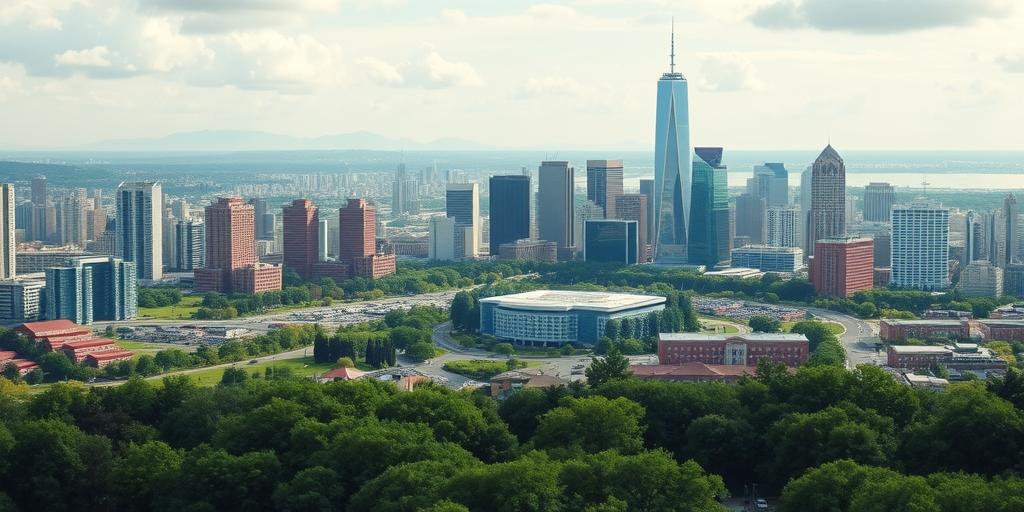In the heart of New Delhi, the recent procession led by Prime Minister Narendra Modi through Ayodhya, following the sanctification of the Ram temple, stands as a grand testament to the city’s profound historical and political significance.
The Prime Minister’s inaugural visit to Ayodhya post the ‘Pran Pratishtha’ ceremony on January 22 garnered considerable fervor. Following Prime Minister Narendra Modi’s visit to the iconic Ram Temple in Ayodhya, Chief Priest Acharya Satyendra Das remarked that PM Modi conducted rituals akin to an ordinary devotee.
“PM Modi approached the Ram Temple as an ordinary devotee, offering prayers and performing ‘Dandavat Pranam’ and ‘Aarti’,” noted Acharya Satyendra Das, as reported by news agency ANI. Subsequently, PM Modi partook in a procession amidst a massive turnout of supporters.
Beyond its religious connotations, this event holds a nuanced political significance, particularly given the timing. With the third phase of Lok Sabha elections scheduled for May 7, ten out of Uttar Pradesh’s 80 Lok Sabha seats are up for contention, heightening the political fervor in India’s pivotal state.
Against the backdrop of unwavering devotion to Lord Ram, the pre-election procession assumes symbolic importance, amalgamating religious fervor with political discourse. Ayodhya is slated to cast its votes on May 20.
Reflecting on PM Modi’s visit to Ayodhya, Ramesh Das, the head priest of Hanuman Garhi temple, remarked, “The denizens of Ayodhya accorded a warm welcome to PM Modi. The city was suffused with enthusiasm from every community. Following yesterday’s procession, a resounding message reverberated nationwide, signifying his anticipated third term as Prime Minister.”
Accompanied by Uttar Pradesh Chief Minister Yogi Adityanath, PM Modi conducted a massive procession in support of BJP candidate Lallu Singh on Sunday.
This Ayodhya event, preceding the third phase of Lok Sabha polls, underscores the intricate interplay between religion, identity, and electoral dynamics in India.
The city was adorned with larger-than-life cutouts of the Prime Minister and UP Chief Minister Yogi Adityanath, alongside depictions of deities lining the streets. The procession commenced from Sugriva Fort, culminating at Lata Chowk via the Ram Path.
Navigating through the congested two-kilometer route took over an hour, as enthusiastic supporters vociferously voiced their allegiance to the PM and CM. Throughout the journey, chants of support for Modi-Yogi resonated, with both leaders reciprocating the gesture with folded hands, urging for votes under the ‘lotus’ banner. The resounding chant of ‘Jai Shri Ram’ echoed throughout the procession.
Amidst the procession, the sounds of conch shells reverberated intermittently, complemented by women performing ‘aarti’ for PM Modi and others. Additionally, artists showcased glimpses of Awadh’s cultural heritage through dance performances. The procession attracted devotees from across the nation, eager to catch a glimpse of PM Modi and CM Yogi. PM Modi’s visit to Ayodhya on May 5 marked his third visit within six months.
Focus on Ayodhya and developmental initiatives
Prime Minister Narendra Modi’s visit to Ayodhya on December 30, 2023, saw the announcement of substantial development projects. This was followed by another visit for the Ram Temple inauguration on January 22, 2024.
Undoubtedly, this event serves to amplify the discourse surrounding the Ram temple, underscoring Ayodhya’s significance as the birthplace of Lord Ram, revered by millions of Hindus globally.
The Prime Minister’s visit bore immense symbolic weight amidst the ongoing Lok Sabha elections. The meticulously planned procession witnessed throngs of enthusiastic supporters, fostering a sense of unity and purpose among Modi’s backers. The procession provided the BJP with a strategic opportunity to capitalize on the momentum generated by the Ayodhya visit.
By aligning closely with the Ram temple issue, PM Modi sought to consolidate support among the Hindu electorate, portraying the BJP as the guardian of Hindu interests. Political analysts view the Ayodhya procession as a strategic maneuver to galvanize the BJP’s voter base, particularly among Hindu voters.
By showcasing the fulfillment of PM Modi’s promise regarding the Ram temple construction and Ram Lalla Pran Pratishtha, the BJP aims to solidify its support across various constituencies nationwide, especially in Uttar Pradesh, where Ayodhya holds profound symbolic significance. Observers believe that PM Modi’s Ayodhya procession will exert pressure on opposition parties to respond effectively.
Parties such as the Congress and regional players like the Samajwadi Party and Bahujan Samaj Party will need to navigate the religious and cultural sensitivities surrounding the Ram temple issue while addressing broader governance and developmental concerns.
The symbolism of Ayodhya transcends Uttar Pradesh and could potentially influence electoral dynamics across the nation.
The BJP’s narrative of cultural nationalism and the Ram temple construction resonates with the majority of Hindu voters nationwide, potentially impacting electoral outcomes beyond Uttar Pradesh.









